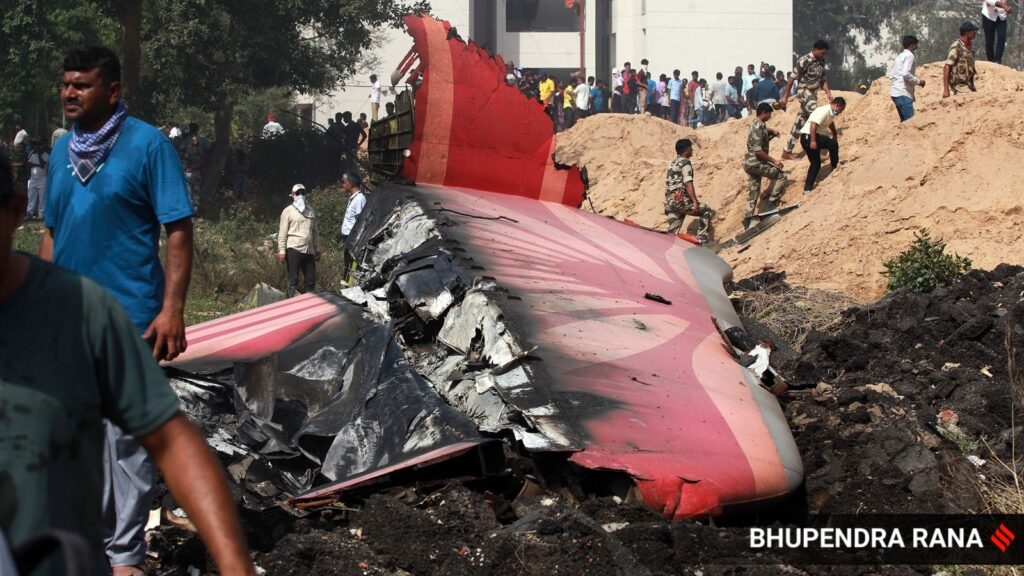970x125
The probe into the June 12 crash of the ill-fated Air India flight AI 171, enroute from Ahmedabad to London Gatwick in a Boeing 787-8, has put the aircraft’s engine fuel control switches at the centre of the investigations, according a preliminary report by the Aircraft Accident Investigation Bureau (AAIB). The tragic accident killed 260 people—241 of the 242 people on board the ill-fated aircraft and 19 on the ground.
970x125
As per the report, these switches transitioned from ‘RUN’ to ‘CUTOFF’ position within a second of each other moments after lift-off, leading to the worst aviation disaster involving an Indian airline in four decades. According to the initial probe report, which was released early July 12 by the AAIB, one of the pilots can be heard on the cockpit voice recorder asking the other why he cut off the fuel, to which the other pilot responded by saying that he did not.
The pilot flying was co-pilot Clive Kundar, while pilot-in-command Sumeet Sabharwal was pilot monitoring for this flight. Sabharwal had nearly 8,600 hours on the Boeing 787 under his belt, while Kundar had over 1,100 hours, both of which were more than sufficient.
Inputs from the aircraft’s flight data recorders (FDR) and cockpit voice recorders (CVR) will now be combed for other easing clues on the timings of the fuel switches movements and the possible reasons behind their transition to the cutoff position.
What are these fuel switches in contention?
Fuel switches regulate fuel flow to the aircraft’s engine. According to pilots and experts, the movement of these critical switches have to be deliberate actions and their accidental movement is next to impossible. The switches have brackets on either side to protect them. Additionally, there is a stop lock mechanism that requires the pilots to lift the switch before moving it from either of its positions — RUN and CUTOFF — to the other.
These switches are usually moved only when the aircraft is on ground — to start the engines before departure and to shut them down after landing. Movement of either of the switches during the flight would be required only in the event of the corresponding engine failing or suffering enough damage that would require shutting off fuel supply to it to ensure flight safety.
 Families of victims of the Air India plane crash at the DNA testing centre in Ahmedabad. (Express Photo: Bhupendra Rana)
Families of victims of the Air India plane crash at the DNA testing centre in Ahmedabad. (Express Photo: Bhupendra Rana)
Need for pilots to move either of the switches while airborne
This need would arise in the case of an engine failure or a major issue with the performance of an engine, or notable damage to the engine. In such eventualities, the pilots would act to shut down the problematic engine, which would require the fuel control switch corresponding to that engine being moved from RUN to CUTOFF. This would immediately cut fuel supply to the corresponding engine, resulting in an almost instant loss of thrust in it.
Story continues below this ad
The pilots may also switch off fuel supply and then immediately switch it on if they believe that the affected engine could be restarted safely.
It is important to note here that such an action would mostly involve moving just one fuel control switch, and not both. Modern dual engine aircraft can operate for hours on a single functional engine. One of the speculative theories, although unsubstantiated by any official information, doing rounds about the AI 171 crash was that the aircraft might have possibly lost one engine upon take-off and the pilots mistakenly misidentified the problematic engine and instead shut down the working engine.
Pilots and aviation safety experts point out that the procedure for shutting down an engine during flight is a highly methodical and well-thought-out procedure, and has a checklist that the pilots are trained to go through. It is not something that is just done randomly by a pilot. It also must involve both pilots and is usually performed only after the plane has ascended to a safe altitude. However, a mistaken shutdown of the wrong engine has happened on rare occasions in the past.
970x125


